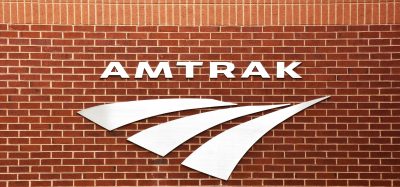Developing a wireless on-board entertainment system for passengers in Greece
Posted: 4 February 2016 | | No comments yet
TRAINOSE S.A, the Greek railway operator, is currently developing and testing an innovative on-board wireless system that will provide its intercity passengers with entertainment facilities including movies, music, e-books and e-magazines, as well as Wi-Fi internet access. For Global Railway Review, Strategic Planning Senior Adviser at TRAINOSE, Nikolaos Athanasopoulos and colleague Panagiotis Georgas explain that the system has been designed within a ‘Bring Your Own Device’ (BYOD) concept.


With the BYOD concept, there is no need for a complex and expensive on-board screens installation programme, as passengers will be able to experience the system via their own mobile devices – laptops, tablets and smartphones – no matter what operating system their device runs on; i.e. iOS, Windows, Android.
Validation of the pilot results will soon introduce a fully operational passenger experience, named TRAINOSE Passenger InfoTrainment Service.
System architecture
The InfoTrainment System has been installed on an A Class passenger wagon of an intercity train.
The system is divided into two subsystems that operate independently through a common communication channel and implement two independent wireless local networks:
Entertainment Network
This provides the entertainment part of the InfoTrainment system. Users connect to the Wireless Entertainment Network via their own device by activating the Wi-Fi functionality, and after successful and authenticated connection, they have access to movies, music, e-books and e-magazines. Its main part is a server where all digital content has been stored. The server also includes the appropriate software for media streaming and for data exchanges, enabling users to authenticate and to navigate the content.
Internet Network
This provides the information part of the InfoTrainment system, i.e. internet connectivity. Users connect to the wagon’s Wireless Internet Network via their own device by activating the Wi-Fi functionality. After successful and authenticated connection, they automatically connect to the internet, enabling them to visit their favourite web pages, or doing any action that demands internet connectivity. The main component of the Internet Network is the 3G Modem-Router (ICOMERAX6) and all associated modules including external antennas for data transmission/reception. A long period of field tests concluded the number of SIM cards needed from telecommunication providers in order to achieve sufficient load balancing and satisfying throughput improving internet usage.
In both aforementioned subsystems, data transfer is performed wirelessly via Wi-Fi (802.11 X) technology on a common communication channel. This is implemented via two basic components:
- Access Points: Two Access Points cover the wagon and they are placed in suitable points in the wagon’s indoor roof in order to succeed sufficient radio coverage
- Switch/Wireless LAN controller: This performs switching between the two networks and controls the network’s behaviour; it is the main component that coordinates network connections, isolates Entertainment Network from Internet Network, authenticates users’ access and defines the way the users connect to the network.
The two independent networks are fully isolated, so a user that connects to the Entertainment Network has no internet access, and vice versa. This assures that access to the entertainment will be available even if internet access is not available (e.g. inside tunnels or in rural areas with poor cellular connectivity).
The entire system is electrically powered by the train’s engine. A UPS protects modules from unexpected over/under voltages while in parallel it performs power management and shuts down normally the Server when the engine stops. All system’s associated modules are mounted on a rack which also protects the operation from the train’s vibrations.
Software architecture
Suitable software architectures and applications were developed in order to support the InfoTrainment system’s back-end functionality.
For entertainment content (movies/music) a real-time transfer Video on Demand (VoD) service has been developed. The entertainment content is transmitted to the users’ mobile devices via streaming, using HTTP Live Streaming (HLS) protocol. The HLS protocol performs adaptive bitrate streaming while adjusting, in real-time, different network conditions, and is widely supported to various and different platforms of modern mobile devices. The HLS protocol fritters a media file (movie or music file) to small segments and in different bitrates (low, medium, high quality) to support different network statuses.
The overall InfoTrainment back-end software that performs HLS media streaming and exchanges all the necessary data with users, is based on a RESTful Web Server. The basic back-end logic is that the web server has the ability to communicate with many different client technologies and platforms through a uniform interface. The use of HTTP protocol and RESTful web services ensure client-agnostic and cross-platform communication. The Apache web server simultaneously handles multiple users comfortably and a database is installed in order to handle the application’s data.
The InfoTrainment system provides the following four levels of security in order to provide access only to authorised and authenticated users, and in order to protect media content from download, theft and copyright infringement.
- A Radius Server is installed in the system’s server in order to control the users’ authenticated access to the network; it contains a list with all authenticated logged-in users
- A token-based authentication is implemented in order to access the entertainment network’s software application; authenticated users get a unique token when they log in to the software application, and they exchange this token every time they exchange data with the server in order to certify their access
- During HLS streaming, media segments that transferred to the client applications are encrypted
- The InfoTrainment system has the ability to encrypt data transferred via HTTP, using HTTPS protocol.
The entertainment service has been designed in order to support access via all modern device platforms including iOS, Windows and Android. To this end, the corresponding applications have been designed and developed which will be available in the App Store, Play Store, Windows Store, or via the TRAINOSE website. Passengers will be asked to download and install a suitable client application on their mobile device.
The client software applications connect to the Server and cooperate with its back-end software for HLS media streaming and data exchange. The main goal of the client applications is to provide a friendly and easy-to-use graphical environment, through which the user can navigate to the main movie or music galleries.
The client software applications are designed to respond to all modern mobile devices and are developed as hybrid, combining the native mobile application logic and the web application logic. The front-end user interface is implemented by the Ionic Software Development Kit. The use of hybrid applications helps improve the user’s experience and integrating it with the mobile device’s functionalities.
Service operation
When passengers switch on their device’s available Wi-Fi networks, the two independent networks appear providing the ability to connect wirelessly either to the internet or to the entertainment platform.
Internet access
A passenger connects to the Internet Network by choosing the network ‘trainoseInformation’ in their device’s list of available Wi-Fi networks. Instantly, the Captive Portal authentication mechanism prevents the user connecting to the network unless they are successfully logged-in through an authentication web page opened in a web browser. If the user logs-in successfully, the connection to the Internet Network is completed, and the user is now able to navigate to their favourite web pages and to enjoy activities that demand internet connectivity. The valid credentials are a valid e-mail and ticket code combination.
Entertainment access
Once the passenger has downloaded the app, they can connect to the Entertainment Network by choosing the ‘trainoseEntertainment’ network on their device’s list of available Wi-Fi networks; again, credentials are a valid e-mail and ticket code combination. The application then turns to the main menu, where the user can navigate to the movies or music galleries, or choose the TRAINOSE menu to find helpful TRAINOSE information.
System administration
The system and its associated services can be remotely administrated by authorised personnel via a VPN connection. Digital content can be added/removed, while statistics about the hits of each media file can also be recorded.
A main administrative functionality is the InfoTrainment system’s update about new valid authenticated users. Periodically, the TRAINOSE ‘webticketing’ system is connected to the InfoTrainment system and updates server databases with valid email and ticket code combinations per each train/route so all passengers of each route have access to the services.
A 3G Modem-Router web platform allows administrators to obtain statistics regarding the internet connection, obtain detailed information about internet connectivity, signal strength, throughput, and obtain details about the behaviour of system’s internet providers.
System deployment
The successful validation of pilot results on the proposed Passenger InfoTrainment System creates a significant opportunity for TRAINOSE S.A to install it on all of its intercity trains and to provide entertainment and internet access to all passengers travelling in A & B class.
Given the fact that the main equipment of the proposed system is installed on the A class wagon (where there is the appropriate room for all installations), the services should be transferred to the succeeded wagons. This can be easily implemented by installing a switch/controller and two access points to each one of the remaining wagons of the intercity train. Wagon-by-wagon, connection is implemented via UTP cables.
There are thoughts to differentiate the service between A and B class passengers; for example B class passengers may have access to just part of the entertainment content, if compared with A class passengers who may have access to the entire content. In any case, providing InfoTrainment system to rail passengers will give them an enjoyable journey and raise customer satisfaction – all with no need for complex at-seat equipment installation.
Biography
Nikolaos Athanasopoulos received M.Sc and Ph.D degrees from the School of Electrical and Computers Engineers of the National Technical University of Athens in 2001 and 2006 respectively, all within the Division of Information Transmission Systems and Material Technology. Since March 2013, Nikolaos has been Strategic Planning Senior Adviser at TRAINOSE S.A with the total supervision of the Strategic Planning Directory of the company. His professional career has focused on information technologies and telecommunications, initially as Research Associate, PhD Candidate (2002-2006) and as Post Doctoral Researcher (2006-2008) in the Institute of Communications and Computer Systems (ICCS), National Technical University of Athens. In 2008-2009, Nikolaos worked as a Primary Engineer, PhD within the private sector. Between 2009 and 2012, he was Temporary Lecturer in the Department of Electronics, and Post Doctoral Research Fellow in the Wireless Communications and e-Applications Research Group of the Technological Educational Institution of Athens. From April 2010 to March 2013, Nikolaos was Vice President & Executive Member BoD of TRAINOSE S.A while in parallel, from May 2012 to March 2013, he was officiate Strategic Planning Director of the company. Nikolaos has been participating in a number of European and national Research & Development projects and has contributed to approximately 40 international journals and conferences. He is member of the Technical Chamber of Greece (since 2001), member of the Computers and Telecommunications Permanent Committee of the Technical Chamber of Greece (since 2009), and Member BoD of the Road Safety Institute of Greece (since 2014).
Global Railway Review Autumn/ Winter Issue 2025
Welcome to 2025’s Autumn/ Winter issue of Global Railway Review!
The dynamism of our sector has never been more apparent, driven by technological leaps, evolving societal demands, and an urgent global imperative for sustainable solutions.
>>> Read the issue in full now! <<<





